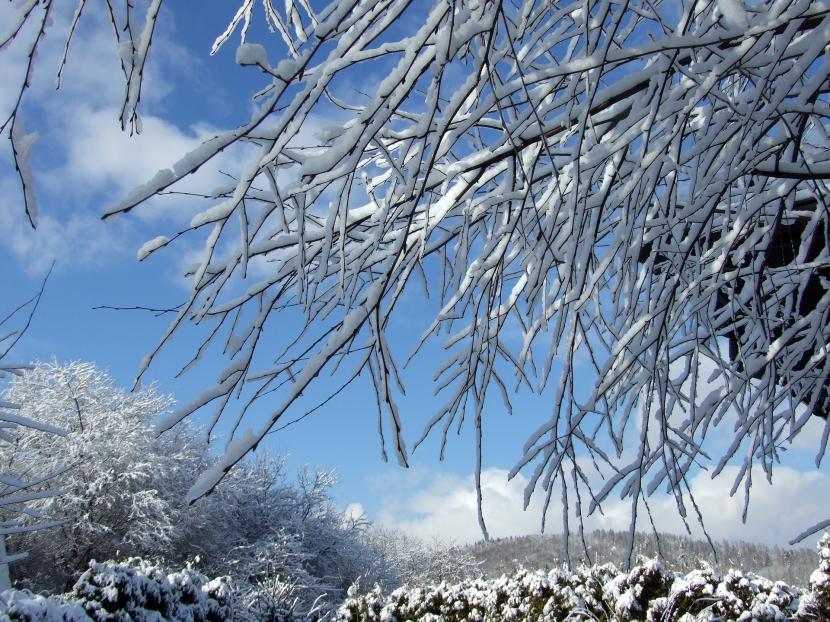
Winter. The season of cold, frost and snow-covered landscapes. During these months, most plants are in the winter period: they do not grow, they do not flower, they do nothing more than stay alive, which gives the garden and terrace a sleepy appearance, which, in a sense, is certain.
However, there are a few winter plants that can change that thanks to its flowers. Do you want to know what they are? Do not miss this special, in which you will also learn to take care of them.
Winter plants
Trees
Acacia saligna (blue acacia)
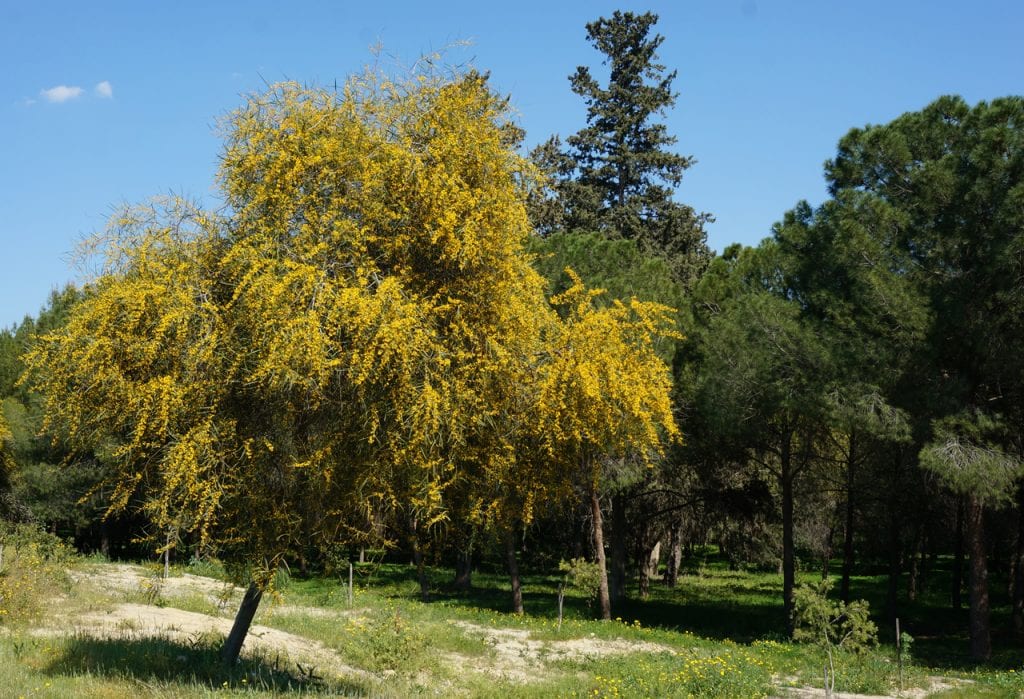
La acacia saligna It is a small evergreen tree that grows up to 8 meters in height that when it blooms, its leaves become hidden behind the flowers. It has a very fast growth rate, at around 50cm / year, and is perfect for shading as it has a very wide crown, up to 6m.
It is not demanding at all, being able to grow in all types of soils. In addition, it resists drought without problems once adapted, and does not need fertilizers or pruning. Withstands cold down to -7ºC.
Prunus dulcis (almond tree)
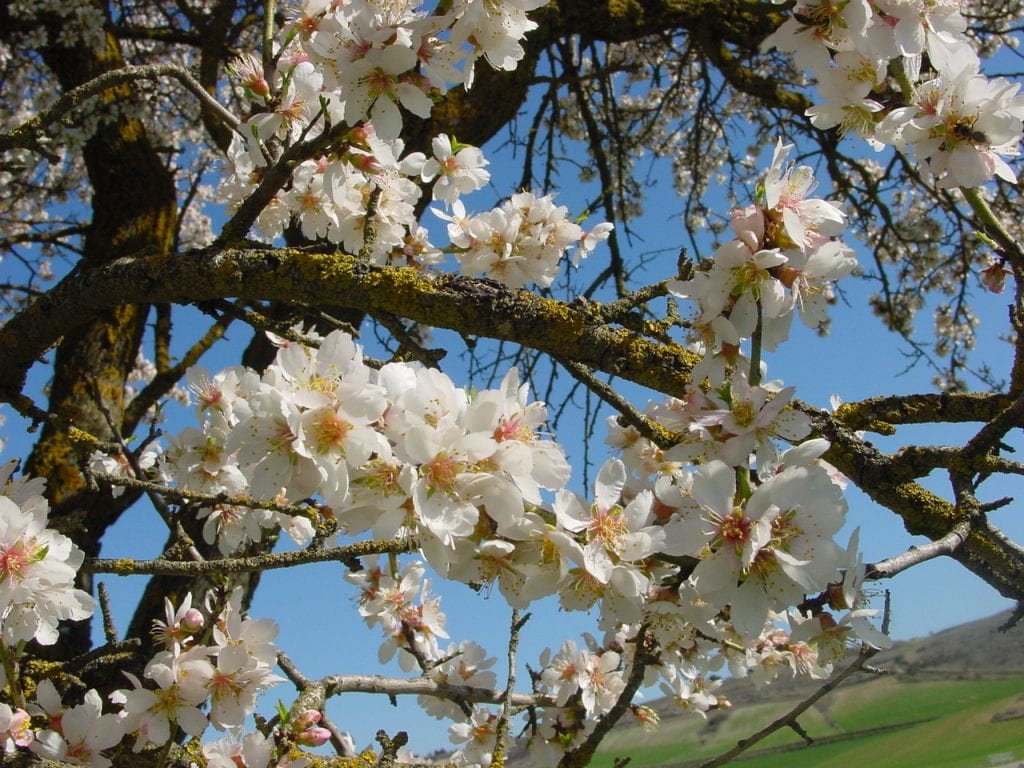
El almond it is one of the fruit trees that requires less cold hours to bear fruit. It is a deciduous plant that reaches between 3 and 5 meters in height, with a more or less straight trunk and a highly branched crown.. Its beautiful flowers bloom very early: in January-February (in the northern hemisphere).
With a medium growth rate and a shallow root system, it is one of the most interesting plants to have in small gardens. But, yes, for it to grow well it has to be planted in limestone or neutral soils, and it has to be watered every 3-4 days to get an excellent harvest.
Withstands cold down to -12ºC.
Ceiba speciosa (Drunken stick)
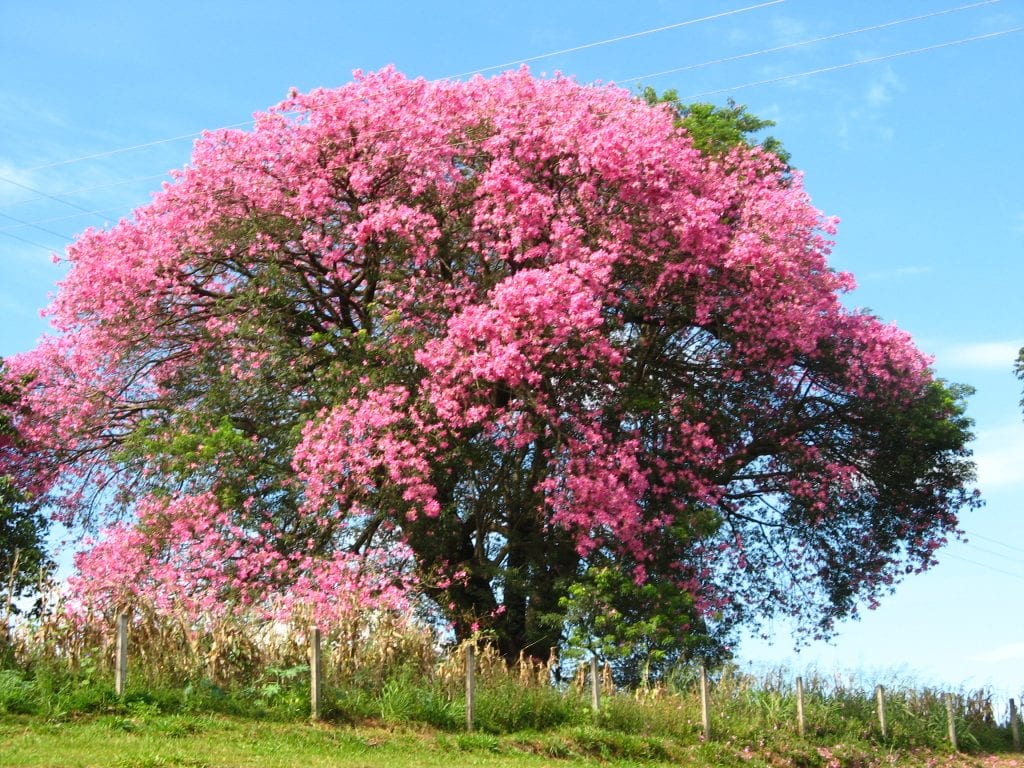
La ceiba speciosa, which receives other names such as Bottle Tree, Wool Tree, Rosewood or Samohu, it is a very beautiful deciduous tree ... and also very large. It can reach 25 meters in height, with a crown diameter of 10m. Its bottle-shaped trunk is protected with thick thorns, and its flowers are spectacular, reaching 5-6cm wide.
In order to grow, it needs a lot of space, so it is only recommended to have it in large gardens, as long as the soil has good drainage and is fertile. It needs frequent waterings and that it be paid during spring and summer, either with organic fertilizers such as guano or minerals (Nitrofoska or Osmocote).
Resists up to -9ºC.
Shrubbery
Lantana camara
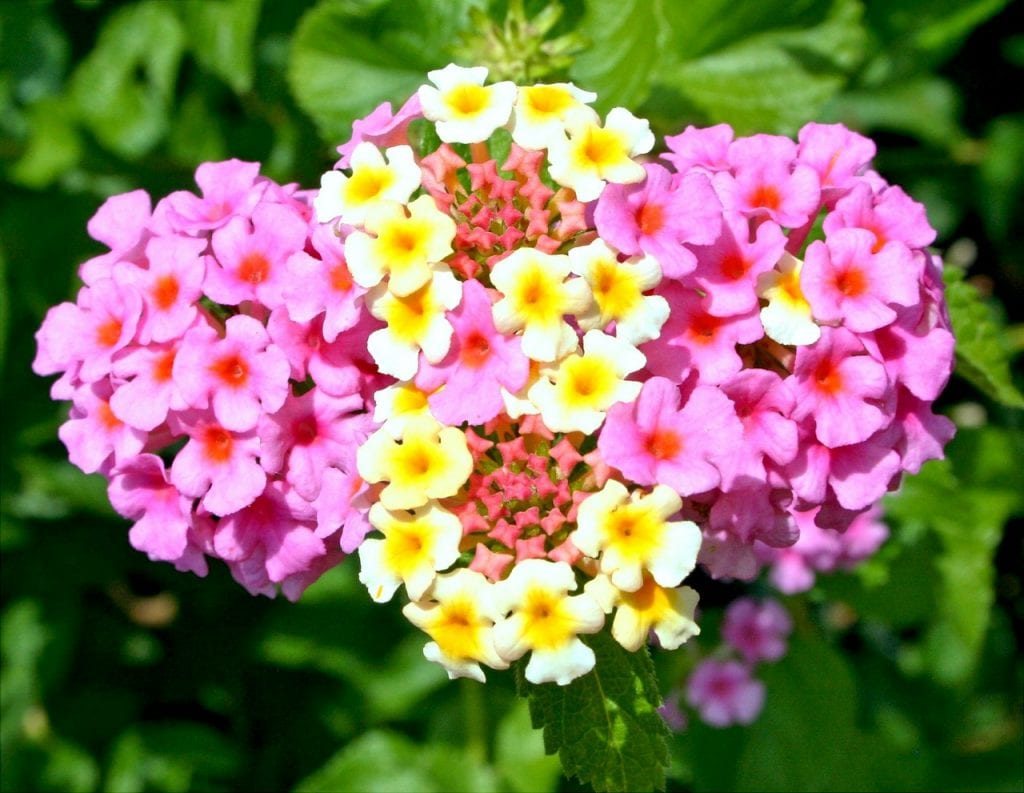
Lantana, known as Spanish flag, Confite or Frutillo, it is an evergreen shrub native to tropical and subtropical America that grows rapidly up to 1,5 meters in height. The flowers are very showy, of very varied colors: pink, yellow, white, red.
It is sensitive to cold and does not tolerate drought, so its cultivation outdoors is only recommended if you live in an area where frosts do not occur or, if there are, they are very mild and very punctual. If that is your case, you just have to place it in an area where it gets direct sunlight, fertilize it regularly with liquid fertilizers for flower plants following the instructions specified on the package, and water it every 2-3 days.
Polygala myrtifolia
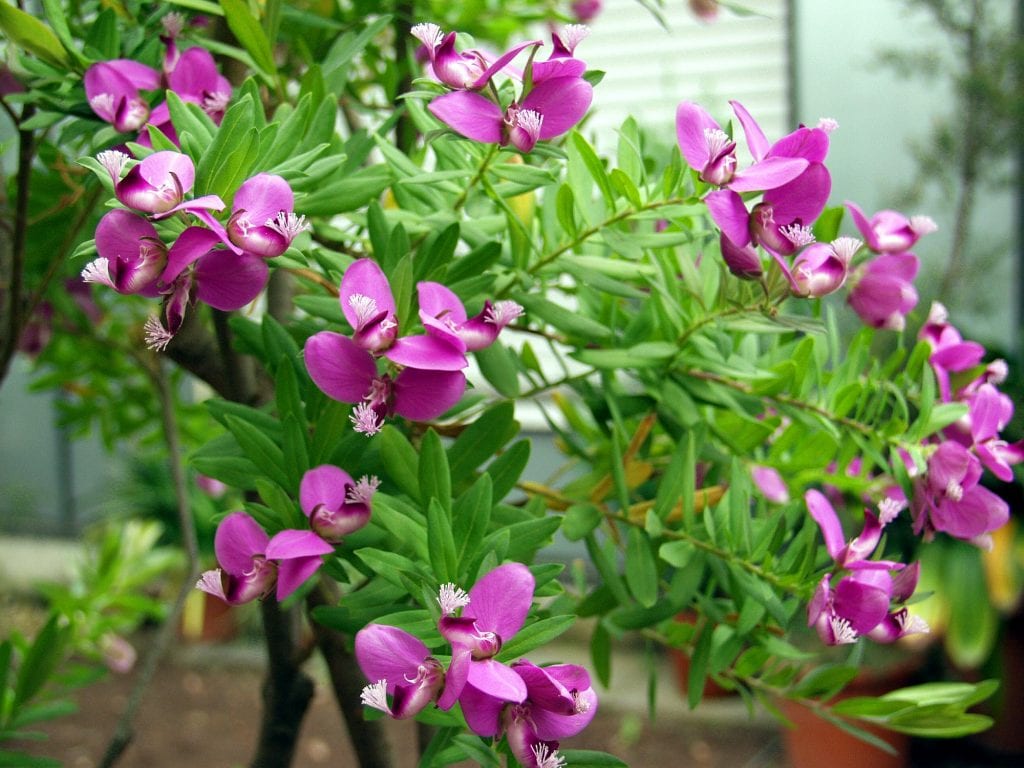
La Polígala, also known as La Lechera del Cabo It is an evergreen shrub that is shaped like a 3-meter tree Originally from South Africa whose lilac flowers are, if I may say so, some of the most beautiful in winter (more specifically, at the end of that season).
It is not a demanding plant, as it can grow both in pots and in all types of soils, either in groups or as an isolated specimen. Resistant to drought, it is perfect to decorate any sunny corner, the only drawback is that it does not resist strong frosts (less than -4ºC).
Rhododendron
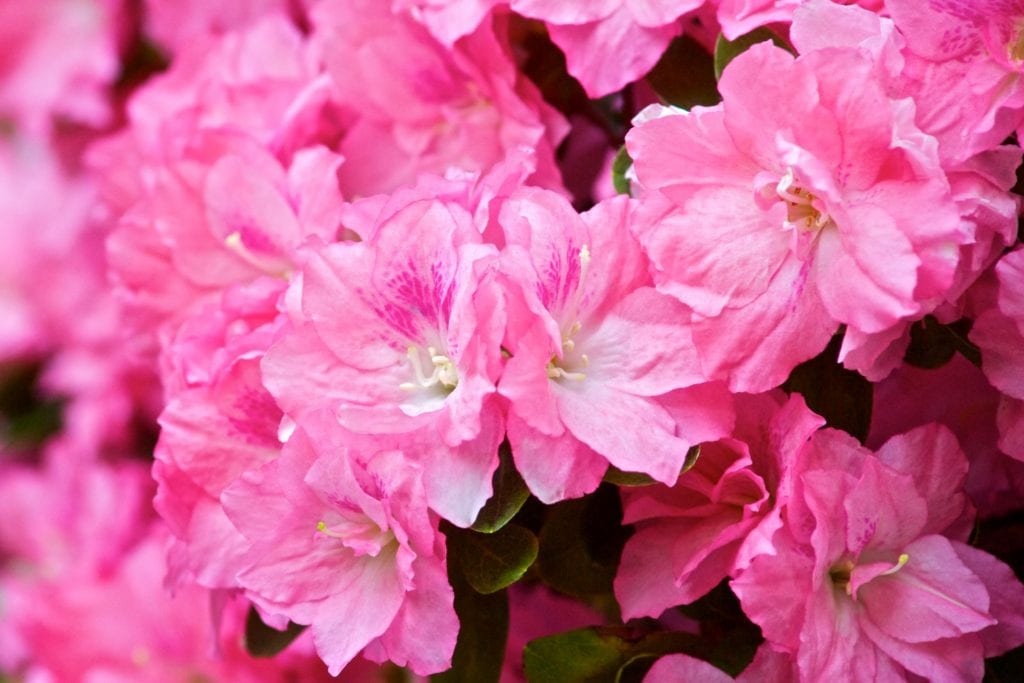
Rhododendrons (including azaleas) are evergreen plants of singular beauty. Native to East Asia, grow at a fairly slow rate until reaching a height of 1m, or two at most. They admit pruning well, and can be planted both in pots and in rows, as a hedge to delimit the different areas of the garden.
Of course, you should know what they are acidophilic plants those who do not like direct sun or excessively hot weather, so that the soil or substrate, as well as irrigation water, must have a low pH, between 4 and 6. In the case of living in a very hot climate, I recommend you plant them in pots with porous substrates, such as akadama, which will allow the roots to always be properly aerated, which will influence the health of the plant.
As for the cold, they support frosts down to -5ºC.
Bulbous and similar
freesias
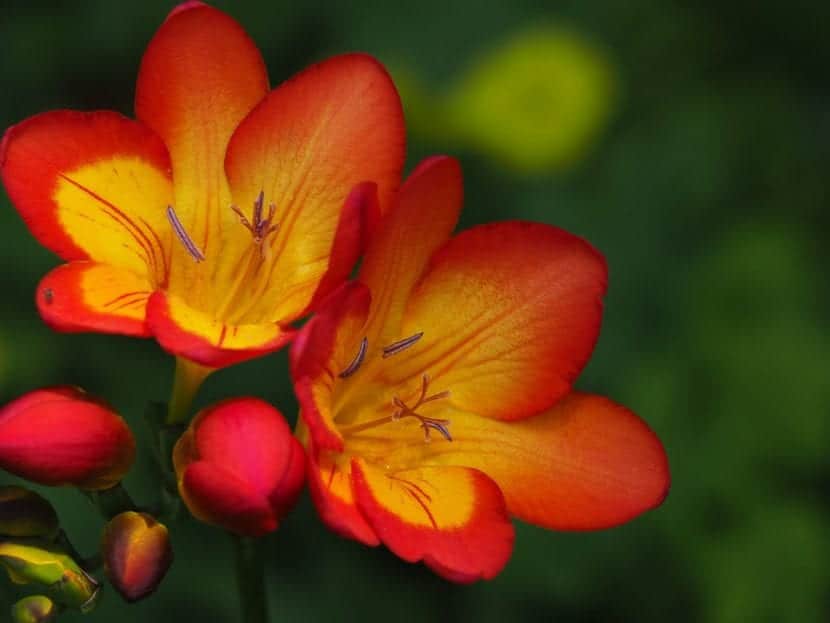
Freesias, also known as francesillas, are bulbous plants native to Africa whose flowers, although they are small -measuring 1 to 2,5 cm in diameter- they give a joy to the garden and the terrace that could make you think that you are not in winter, but in the season of life and the explosion of colors: spring.
The bulbs are planted in autumn, in substrates or soil with good drainage, it is kept humid (without flooding) and in less than one might think its leaves and later its flowers will begin to sprout.
Resists cold down to -3ºC.
Narcissus (daffodil)
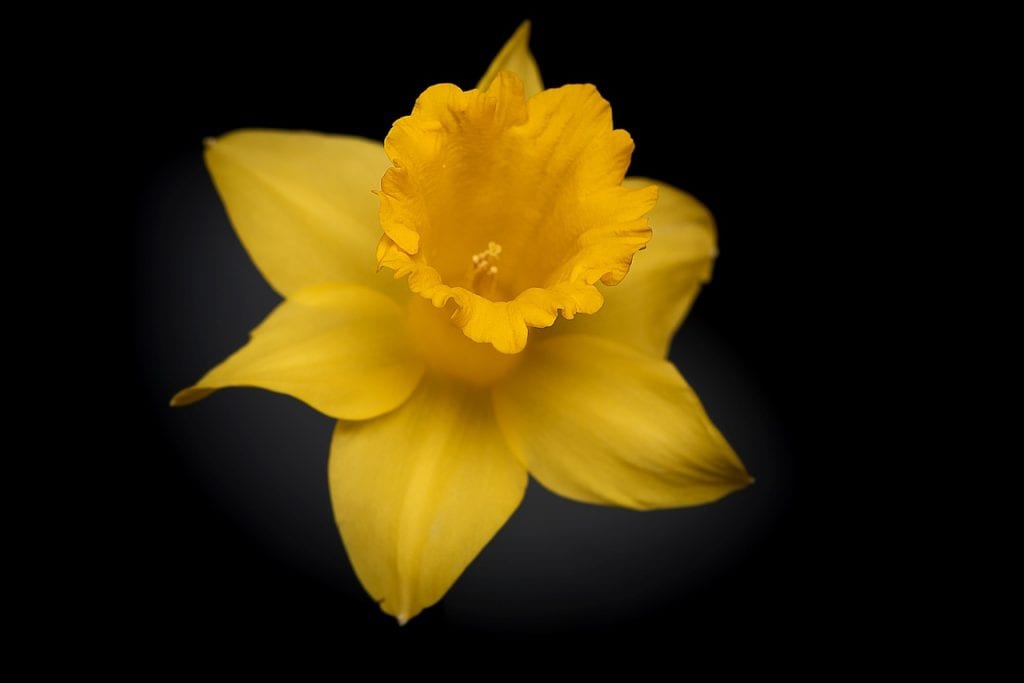
Daffodils are bulbous native mainly to the Mediterranean region, although they can also be found in Central Asia. These plants reach a height of 40-50cm, with beautiful umbel-like flowers which have a membranous spathe with a single bract.. These can be of various colors: yellow, white, pink, bicolor.
In order to enjoy its beauty, all you have to do is plant the bulb in autumn, in a pot or in the garden, making sure that it will be exposed to sunlight if possible throughout the day. Keeping the substrate or soil moist (but not waterlogged), in a couple of months its leaves will begin to sprout and then its flowers.
Resists cold down to -5ºC.
Zantedeschia aethiopica (Calla)
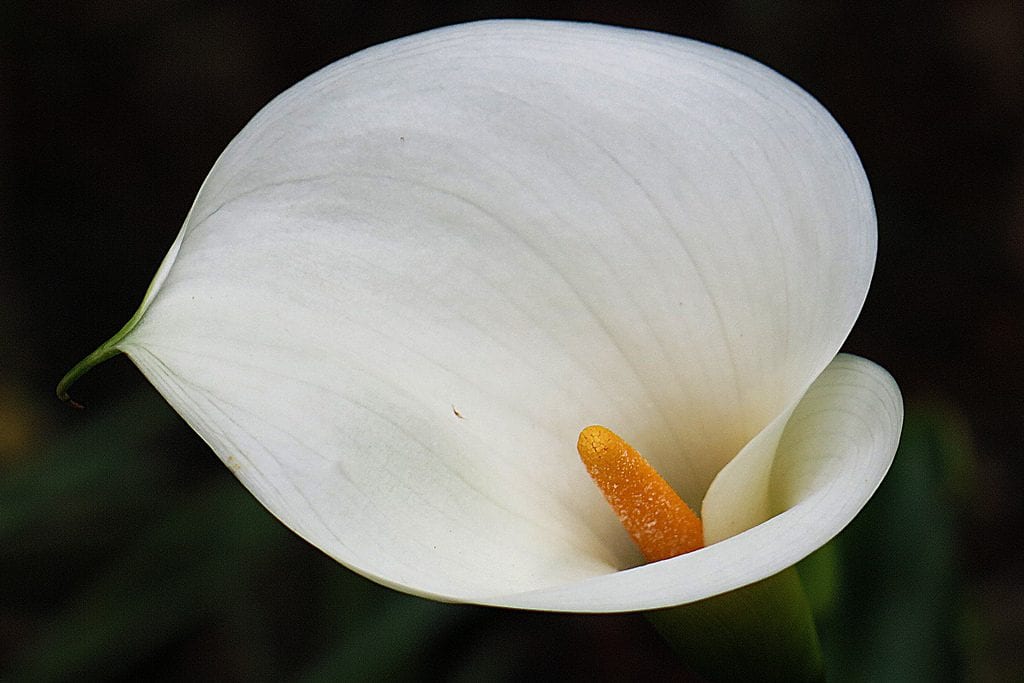
Calla, also known as Water Lily, Alcatraz, Ethiopian Ring or Cartridge, is a perennial rhizomatous plant native to South Africa that is grown in the warm-temperate regions of the world. It grows up to 100cm tall, with large, bright green leaves and normally white inflorescences that can be up to 18cm long..
Its cultivation is simplePlanting the rhizome in autumn in an area protected from direct sun, in a soil or substrate that has very good drainage. In order for it to grow well, it must be watered when the soil or substrate begins to dry out, preferably with rain water or, if it cannot be obtained, without lime.
Resists cold down to -4ºC.
Flowering plants (annuals and perennials)
Gazania x hybrida
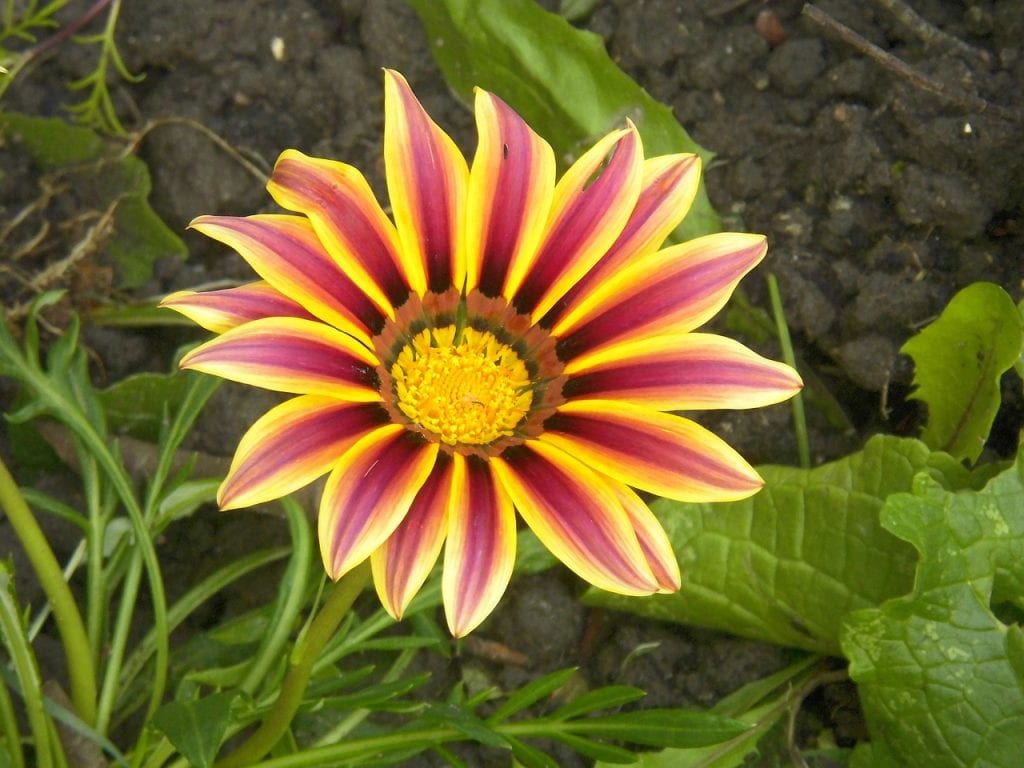
The Gazania is a perennial herbaceous plant native to South Africa whose flowers open in the sun and close when it is hidden. It measures about 20cm high, so it is a very interesting species to get an incredible rug in natural colors.
In addition, it is a plant suitable for beginners since it is only necessary to bear in mind that it must be exposed to direct sun, and that it must be watered every 2 or 3 days (more frequently in summer) to prevent the soil from dry too much.
It does not resist strong frosts.
Pelargonium sp (Geraniums)
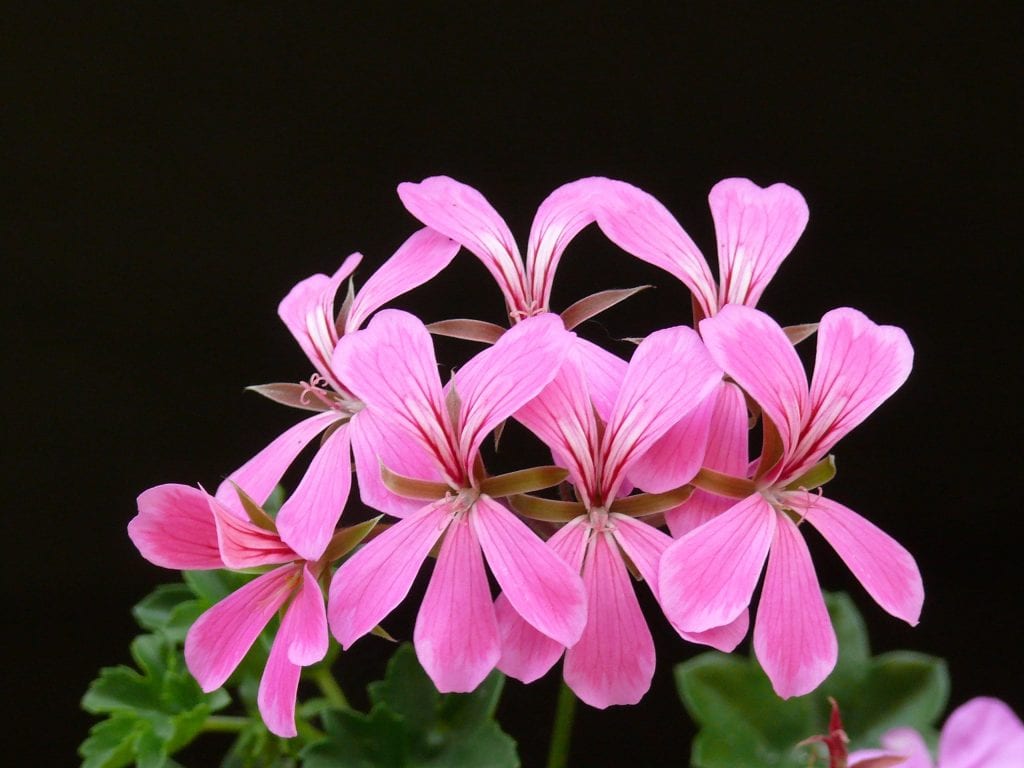
Geraniums. What to say about them? They are famous for their beautiful and cheerful flowers, which color the terraces and gardens. They are the undisputed protagonists of the patios of Andalusia, and one of the most demanded plants. Depending on the species, grow to a height of 40-50cm, but as they admit pruning well, their stems can be cut whenever necessary.
Its care is simple: sun or semi-shade (they have more light than shade), frequent waterings in summer preventing the soil or substrate from drying out, and preventive treatments with Cypermethrin 10% (apply on the substrate with irrigation once a week during spring and especially in summer) to prevent the larvae from harming them.
These extraordinary plants withstand the cold of up to -4ºC as long as they are specific and short-term frosts.
Viola tricolor (Pansies)
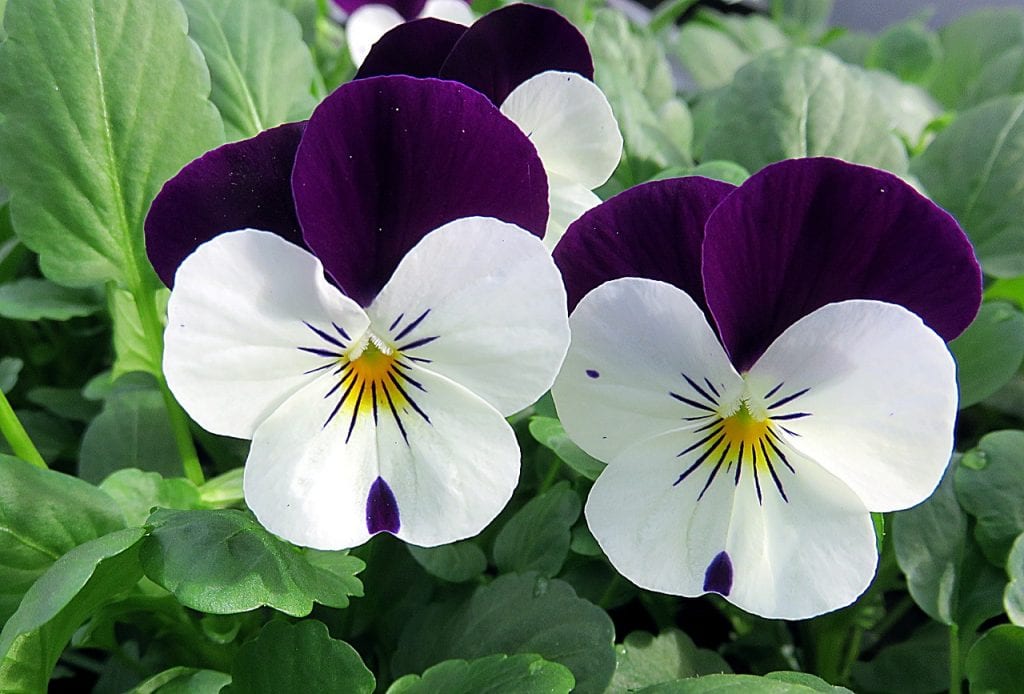
If there is a true winter flower, it is that of pansy, a small biennial herbaceous plant (that is, one that has a life cycle of two years) blooms when winter still has a month or two to finish. It measures between 15 and 25cm in height, and has flowers composed of five velvety colored petals that can be white, yellow, lilac or red..
It is widely used to decorate gardens during winter, as it resists cold much better than other similar plants. What's more, it can also be had in pots to decorate the terrace, in which case it is advisable to use a substrate that has very good drainage to prevent its roots from suffocating.
If we talk about irrigation, you have to water every 3-4 days, depending on the humidity of the earth and the weather. While it is in bloom, it can be fertilized with a fertilizer for flowering plants following the indications specified on the package.
The thought supports mild frosts down to -4ºC.
Climbers
Jasminum polyanthum (Winter Jasmine)

Winter Jasmine, also known as China Jasmine or Chinese Jasmine, It is a climbing shrub native to China that has deciduous leaves and small fragrant white flowers composed of five petals.. It can grow up to 6 meters in height, but if that seems too much you can prune it whenever you consider necessary.
This is a perfect climber to have in small gardens, since its growth is easily controlled, and it has no invasive roots. The only drawback is that it needs support to climb, but that has an easy solution: it is planted near a pergola or lattice, its stems are tied with cable ties or wire so that they are supported but not too tight and that's it.
With direct sun and regular watering, winter jasmine will grow wonderfully even in slightly cold climates. Withstands frosts down to -5ºC.
Pyrostegia venusta (Winter bignonia)
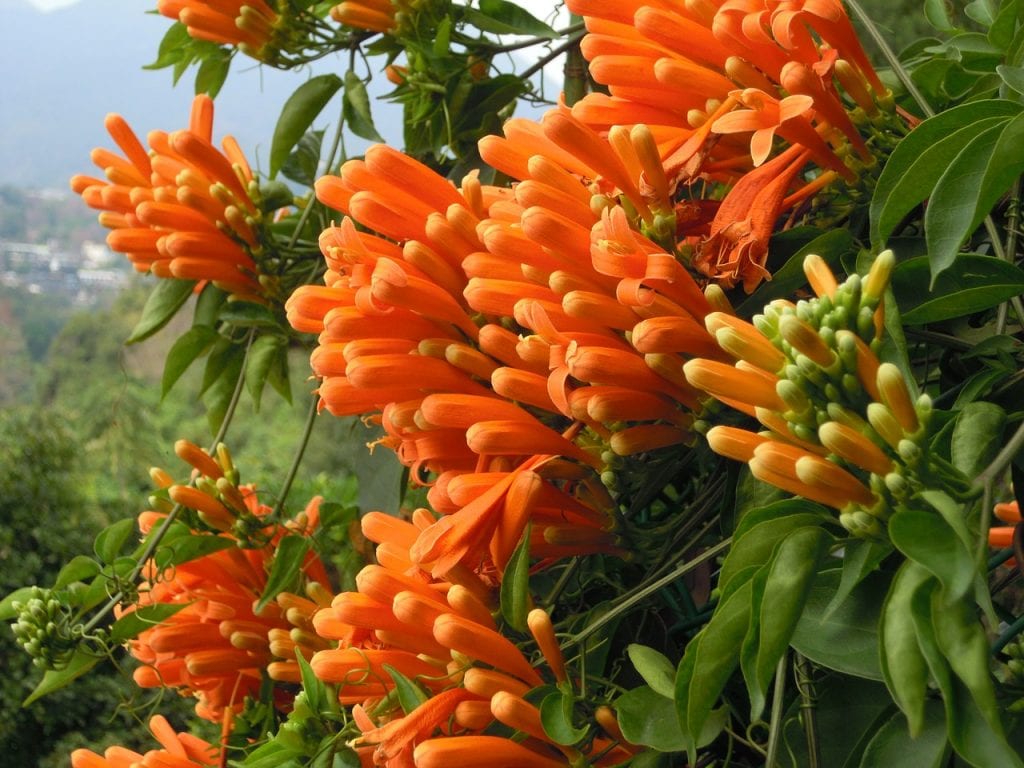
The winter Bignonia, also known as Flame Liana or Orange Trumpeter, is an evergreen climber native to Brazil, Paraguay, Bolivia and Argentina that grows from 4 to 6 meters. The flowers are tube-shaped, 4-6cm long, and are of an intense orange color.
Its care is simple, being able to place both in full sun and in half shade, in pots or in the garden near a pergola or fence. So that it grows better, it is recommended that the soil or substrate be slightly acidic, with a pH between 4 and 6, and that they have good drainage.
It is sensitive to strong frosts, so if you live in an area where temperatures tend to drop below -3ºC it is convenient to protect it.
Solandra maxima (Giant Trumpeter)
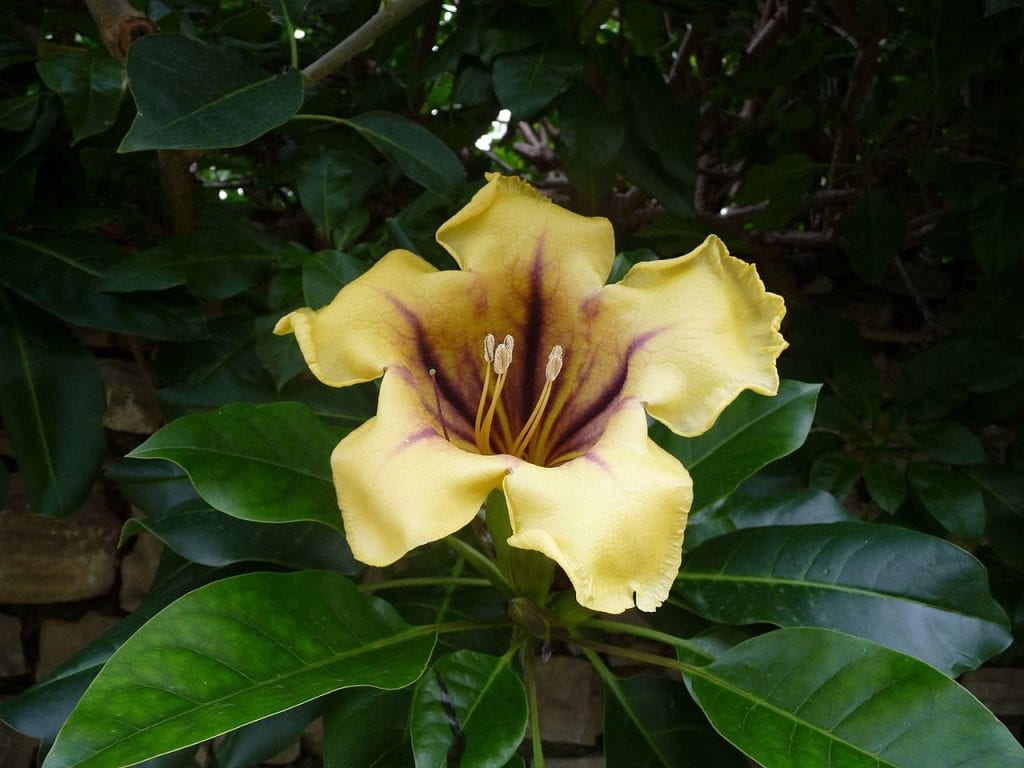
The giant Trumpeter, also known as the Gold Cup, Golden Cup, Trumpets, Trumpet Plant or simply Solandra, It is an evergreen climber native to Mexico that has a very fast growth rate reaching 60m. The leaves are large, 25cm, of a very beautiful bright green color. The flowers are spectacular: they are trumpet-shaped and about 20cm tall. As a curiosity, it must be said that they smell at night.
Due to its size, it is a great climber to get shade in areas exposed to the sun, making it climb pergolas, gates or lattices. It is a very advisable species to have in large gardens, but through pruning it can be had in small ones and even in large pots.
It is very adaptable, so it can be planted in all types of soils, both in direct sun and in semi-shade. Water it every two-three days in summer, and every 4-5 the rest of the year, and you can have a spectacular climber, no, the following.
It resists short-term and occasional frosts down to -3ºC.
Tips and tricks for caring for plants in winter
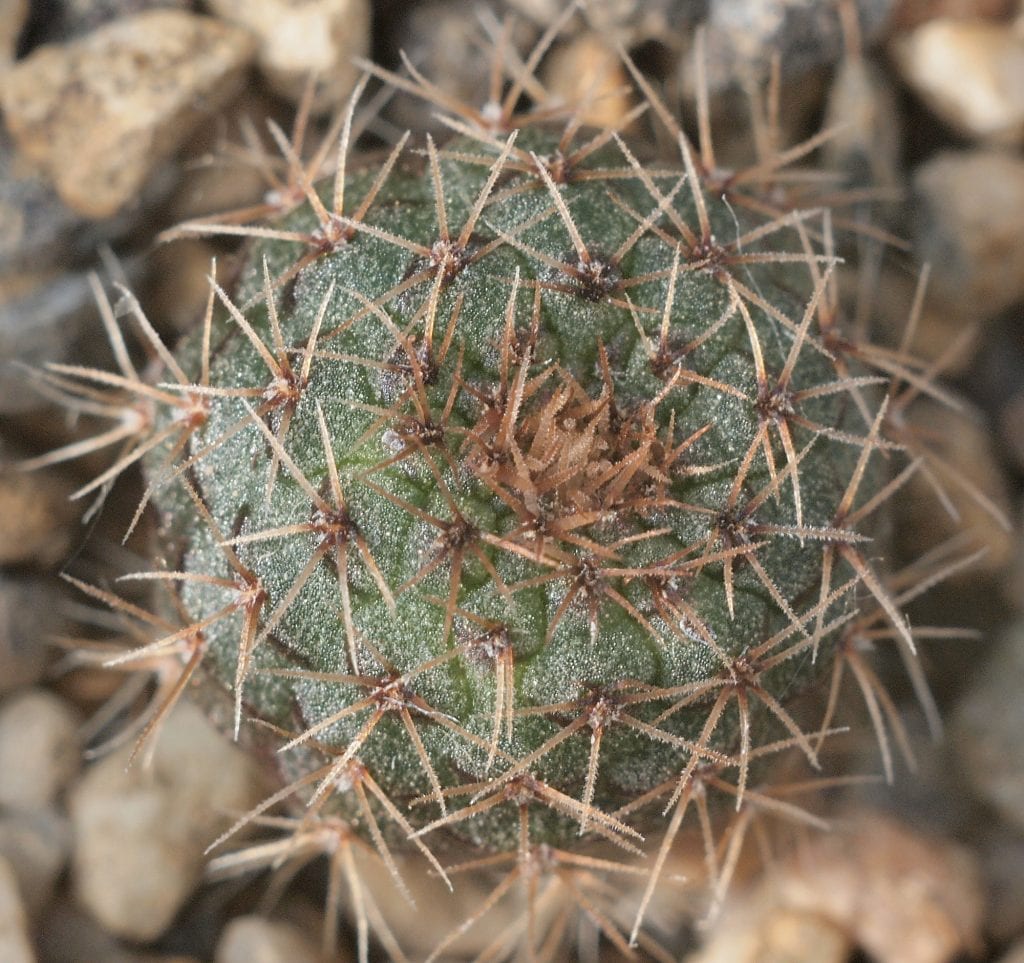
Now that we have seen the main plants that bloom during this season, what better way to finish the article with tips and tricks to take care of plants during these months? Thus, the megapost will be much more complete 🙂. Let's go there. How to take care of the plants during the colder months?
Location
The coolest plants, that is, those considered indoor, they have to be placed inside the home, in a room where a lot of natural light enters and where they are also protected from drafts (both cold and warm).
If you have recently acquired plants, even if they are resistant to your climate, I also recommend protecting them, especially if they have been inside a greenhouse, otherwise the hail could damage their leaves.
Irrigation
Irrigation during these months it must be very scarce. The plants hardly grow during the winter, which, added to the high humidity in the environment, makes the earth remain humid for longer. Therefore, it is necessary to space the waterings to prevent the roots from rotting.
Before watering, always it is highly recommended to check the humidity of the soil inserting a thin wooden stick to check how much has adhered to it. If it comes out practically clean it is because it is dry and, therefore, we can water.
If the water is cold, a trick so that its roots do not suffer is to warm it a little by putting it to heat. This is especially good for watering tropical plants.
Subscriber
Wait, wait, pay… in winter? No, but yes. Let me explain: the contribution of fertilizer that occurs in winter is not made to feed the plants, but rather so that their roots remain at a comfortable temperature, which help them wake up better and faster as temperatures start to rise.
What compost to add? It will depend on the type of plant:
- Garden and orchard plants: organic compost in powder, such as manure or worm castings, a layer 3-5cm thick.
- Potted plants (except succulents y caudiciform plants): the same as the previous case, but the layer must be 1-2cm thick. Slow release chemical fertilizer can also be used.
- Potted tropical plants: If you have plants that are at the limit, add a small spoonful of Nitrofoska once every 15-20 days to better withstand the cold.
- Cactus and succulent plants: better not to pay. Only if you live in an area with a mild and warm climate, I would recommend adding a small spoonful of Nitrofoska once a month, but nothing more.
And now we are done. I hope this post has been useful to you to know which are the plants that bloom in winter and how they are cared for during these months, the coldest of the year. You already know that if you have any questions, you can leave it in the Comments 🙂.
Have a nice winter!
Good morning, could you tell me about winter jasmine how are its roots? Could you plant it next to a wall without the roots breaking it? Thanks in advance
Hi Ines.
Its roots are not invasive, don't worry.
A greeting.
What an interesting page, I have learned some simple but important things for the maintenance of my plants. I have all of them in pots since I live in an apartment. I have jasmin, hortencias, roses, gardenias. I am sure that this page of you will help me a lot. Thank you.
Thanks for your words, Hugo.
If you have any questions, now or later, contact us 🙂
Great information, thank you very much
Hello Ana Maria.
We are glad that it was of interest to you
Regards!
Very sharp images
Hi Cyril.
Thanks. We always try to choose the sharpest images so that it is easier to identify the plants.
We are glad to know that you liked them 🙂
Regards!
A lemon tree that I bought five or six years ago, two years ago it grew a very powerful and vertical trunk. Two years ago the lemon tree did not produce lemons, leaving me very worried. This past year it had many flowers, so I was happy thinking that it would have many lemons… Five lemons grew from the old trunk, which have not yet ripened. However, from the new trunk, quite a few flowers grew, which over time have transformed into great and large tangerines. However, its taste is bitter! What do you advise me to do with this lemon tree? What do I do with the trunk that gives tangerines without me having made any graft or anything? A neighbor has told me that the same thing has happened to some close neighbors, and it seems that a bird is the culprit of this transformation ... Could this be so?
I am extremely grateful to them.
Ferrán Collado M.
Hi Ferran.
Nerd. What has happened is that you have a lemon tree grafted onto another fruit tree (mandarin). My advice is to remove everything from the mandarin, and leave only the lemon tree. In this way, you will have good quality lemons 🙂
Regards!